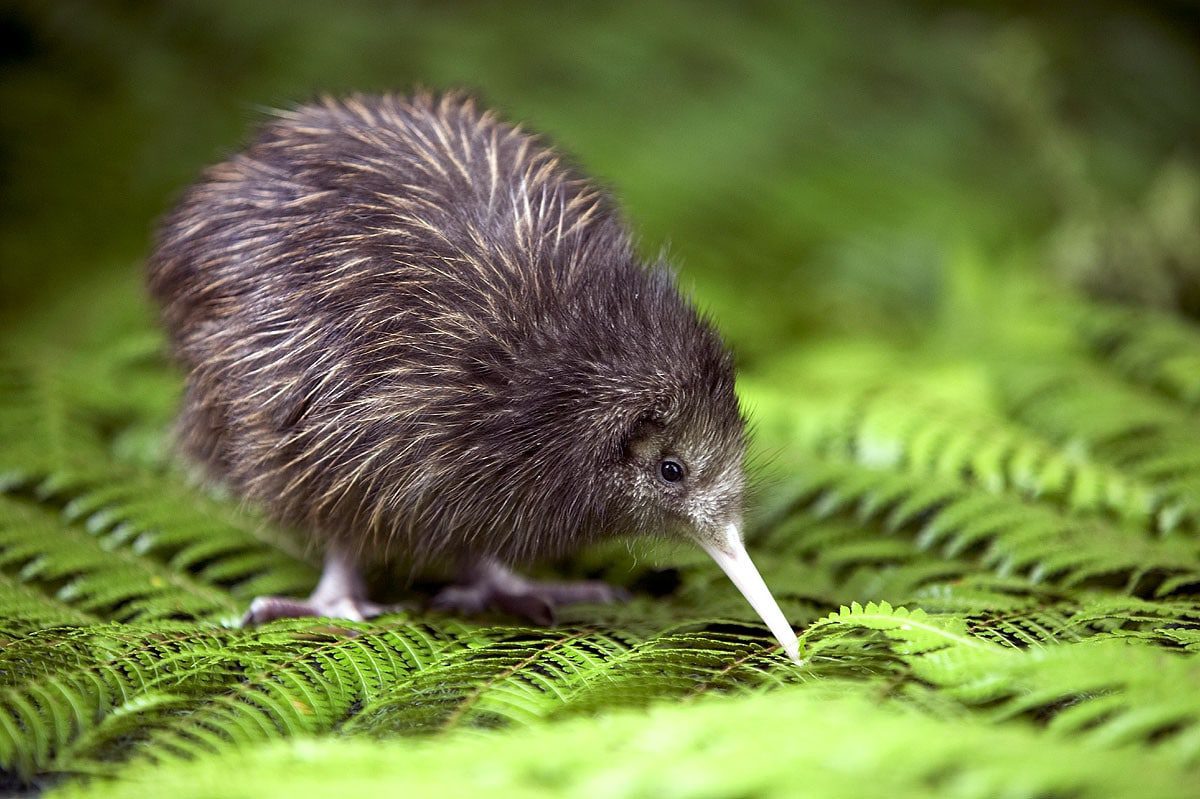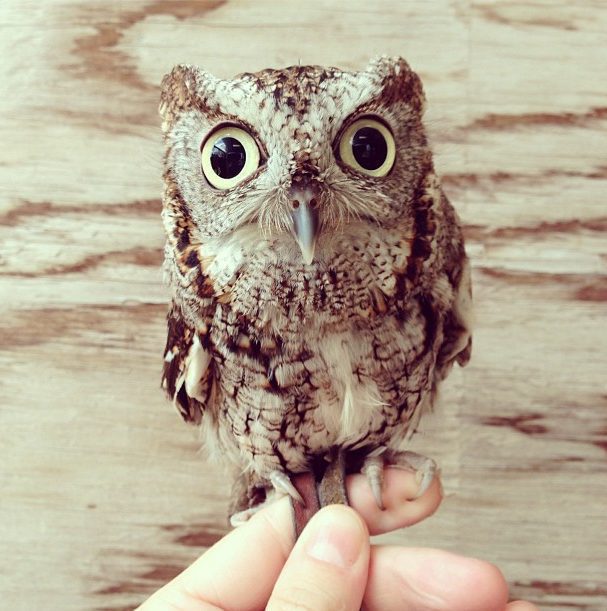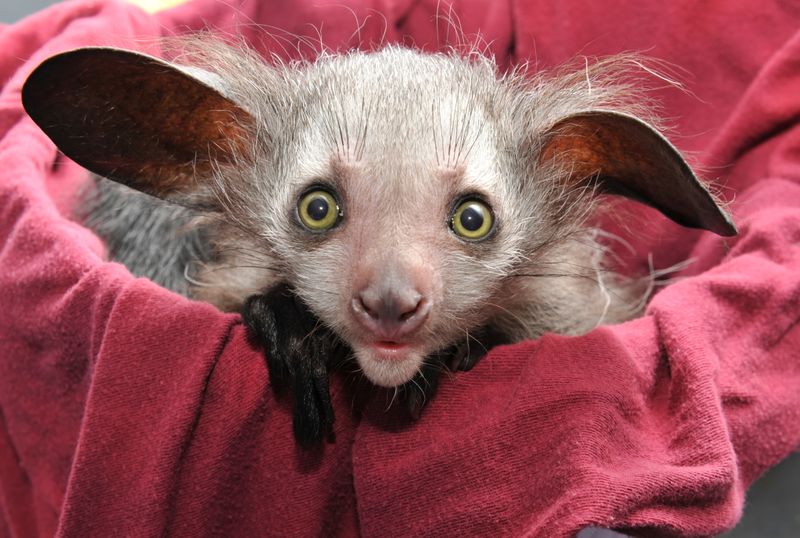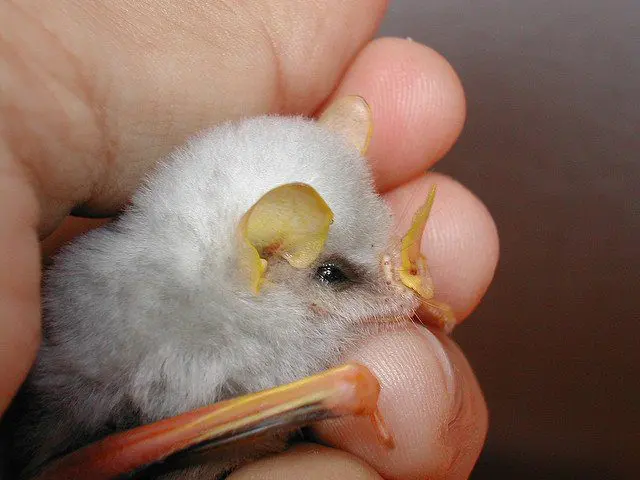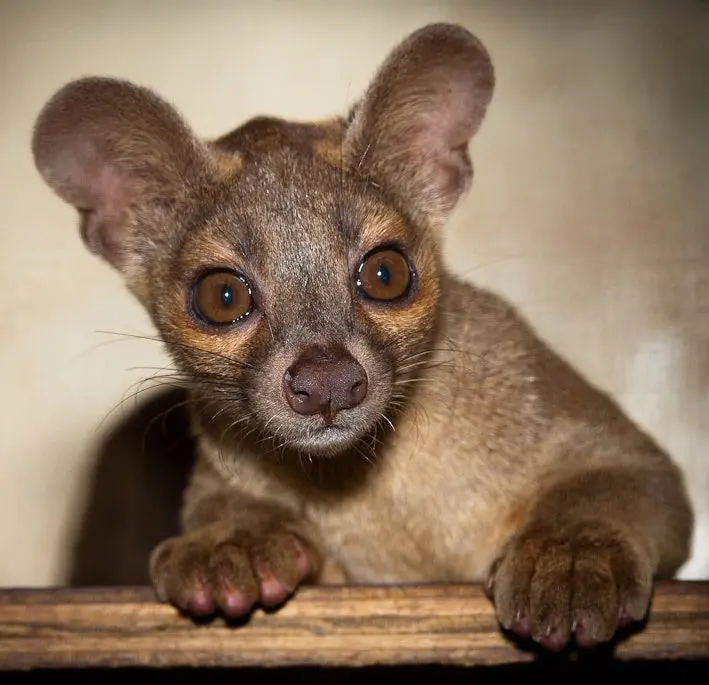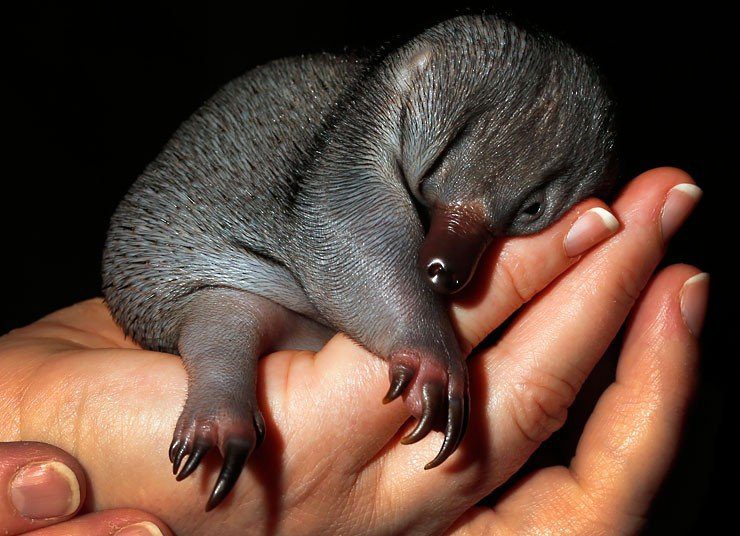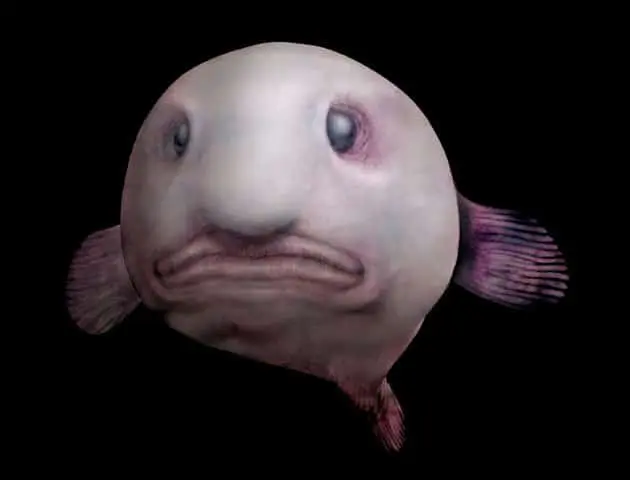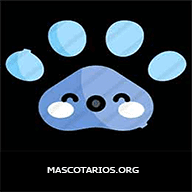Kiwis are shy, nocturnal creatures with a highly developed sense of smell thanks to the existence of real whiskers around their beaks., These whiskers are effective olfactory organs.
Wild
▷ The world of Pets: Dogs, cats, birds, reptiles, amphibians
A Kiwi
▷ The world of Pets: Dogs, cats, birds, reptiles, amphibians
Gizmo the Screech Owl
▷ The world of Pets: Dogs, cats, birds, reptiles, amphibians
Aye-Aye Aye!
The aye-aye is the only living member of the Daubentoniidae family., and is considered to be the most unusual of all primates.
Key data
Conservation status: Near-threatened
MORPHOLOGY
Aye-ayes have a unique method of feeding: A large percentage of its diet consists of insect larvae that live in dead wood inside. They find the larvae by tapping in the branches and listening to the echo. When is a cavity in the wood (that may contain insect larvae), the aye - aye bites through the outer layers of bark to then get a long finger at the bottom of the hole to remove the dam. He also often uses this third finger to drink liquids quickly and to wash himself..
▷ The world of Pets: Dogs, cats, birds, reptiles, amphibians
Honduran white bat
The Honduran white bat found only in a few Central American countries. With luck you can find in Nicaragua, Costa Rica and, of course, in the country from which it is named, Honduras. But, is extremely rare and, otherwise, it is minuscule – the largest examined have never exceeded the 5 cm length. Not only that, but his white skin has been developed for a reason: camouflage.
This species lives in primary and secondary forests, in groups of 4-8 individuals, they live in leaves of Heliconias, that builds a kind of shops, where they sleep and protect themselves during the day. When resting, is hanging together upside down in the center of the blade.
White pelage serves to reflect the green light that is filtered through the platanilla sheet. So they hide grouped, between the sheets, and is protecting predators that can attack from the ground.
▷ The world of Pets: Dogs, cats, birds, reptiles, amphibians
The Fossa
The Fossa, a rare carnivore native to Madagascar, It is the largest predator of the island. With only 2500 surviving individuals, It is considered one of the most endangered species in the world.
The fossa is an animal of the family of the Mongoose, with a length of almost 2 meters from snout to the tip of the tail and a weight of up to 12 kg.
Reserved, like a cat, they are expert climbers and well-equipped to pursue the lemurs in the forest, hunting down even the largest of the lemur species.
On the island of Madagascar, the fossa is the largest carnivore and is in fact the largest predator on the entire island. As predator eats practically everything, from lemurs to wild pigs and poultry. Unlike its cousin the Mongoose, this species has many characteristics that make it look like a cat, such as retractable claws and sharp teeth. It has a reddish brown layer and its snout is similar to that of a dog.
▷ The world of Pets: Dogs, cats, birds, reptiles, amphibians
The Echidna's short snout
The short snout Echidna is the only species of echidna Australia. It is easy to recognize by their sharp spines, short legs and long snout.
Measured between 30 and 45 cm.. and weigh between 2 and 5 kg. Found on Australia, including Tasmania. While found in all Australia, not as common in sydney as it used to be. The body, with the exception of the bottom, the face and the legs, It is covered with cream-coloured spines. These thorns, that it reach 50 length mm, they are actually modified hairs.
It lives in forests and woodlands, grasslands, heathland and arid environments.
The Echidna he is shy and moves slowly. Is solitary most of the year, but in time of mating several males may follow a female. Their activity patterns differ based on location and temperature – in the warmer areas of Australia is completely nocturnal, spending the rest of the day resting from the heat. It usually took refuge in rotten logs, stumps or Burrows, either under bushes. In more temperate areas activity occurs at sunset, while in South Australia echidnas are often active during the day, especially during the winter.
▷ The world of Pets: Dogs, cats, birds, reptiles, amphibians
The tenrec
The tenrec They are from the mammal family and are found in Madagascar and parts of Africa. They resemble hedgehogs, shrews, weasels, mice and even, otters, as a result of convergent evolution.
The smallest species are the size of the shrews, with a body length of around of 4,5 centimeters and a weight of only 5 g., While the largest, the common or tenrec tailless, is of 25 to 39 centimeters in length, and you can weigh more than one kilogram. While they may resemble shrews, sea urchins, or otters, they are not closely related to any of these groups, its closest relatives are other insectivorous African mammals such as golden moles and elephant shrews.
Most species they are nocturnal and they have vision problems. Their other senses, However, they are well developed, they have especially sensitive whiskers. As with many of its other functions, the dental arrangement of tenrecs varies greatly between species, they may have of 32 to 42 teeth in total. unusual for mammals, the permanent dentition in the tenrecs is unlikely to erupt fully until long after that his adult body size has been reached. This is one of the anatomical features common to, hyraxes, sengis y Golden moles (but apparently not the aardvarks), consistent with their descent from a common ancestor.
▷ The world of Pets: Dogs, cats, birds, reptiles, amphibians
The strange fish drop Psychrolutes marcidus
Content |
|---|
The species Psychrolutes marcidus, best known for fish drop, smear fish, Pez sapo or Janira, It is without a doubt one of the fish more ugly from the ocean. These saltwater fish have what resembles a large nose and appear to be frowning. Its length is about 30 cms. Found at extreme depths off the coast of Tasmania and Australia. For this reason the drop fish is very difficult to see in its natural state..
Fish drop has the ability to withstand the high pressure of these depths because your body is actually a gelatinous mass with a density slightly less than the water of the sea. This gives him the ability to float and swim on the seabed without spending much energy..
They are not very active. In fact, most of the food, sea urchins, molluscs and crustaceans, simply floats next to them. This deep-water fish, simply pick and choose what to eat. Drop fish are often caught in trawl nets, What makes it an endangered species and is currently in danger of extinction.
A strange in the drop fish fact is that playing sit on their eggs until they hatch.
Characteristics of the Drop Fish
- gelatinous body
- Ability to inflate like a balloon
- Habitat: deep ocean water
- Food: plankton and other small organisms
Curiosities about the Drop Fish
Here we present some curiosities about the Drop Fish:
- It is capable of inflating to a size that is more than 100 times its normal size.
- The Pez Gota is considered a vulnerable species due to excessive fishing and the destruction of its natural habitat..
- It is an animal that has been discovered relatively recently, in 2003.
